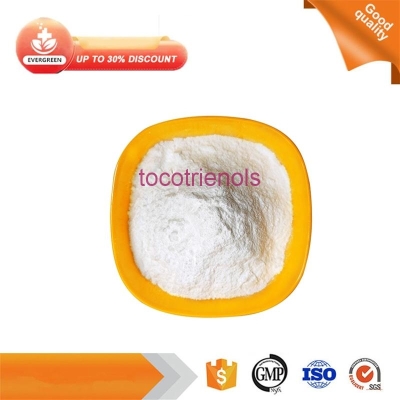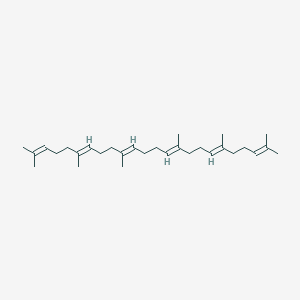-
Categories
-
Pharmaceutical Intermediates
-
Active Pharmaceutical Ingredients
-
Food Additives
- Industrial Coatings
- Agrochemicals
- Dyes and Pigments
- Surfactant
- Flavors and Fragrances
- Chemical Reagents
- Catalyst and Auxiliary
- Natural Products
- Inorganic Chemistry
-
Organic Chemistry
-
Biochemical Engineering
- Analytical Chemistry
- Cosmetic Ingredient
-
Pharmaceutical Intermediates
Promotion
ECHEMI Mall
Wholesale
Weekly Price
Exhibition
News
-
Trade Service
UroGen, a biopharmaceutical company focused on the clinical phase of urological oncology that addresss unsepped medical needs in the field of urology, announced on October 30 that the U.S. FDA has awarded the company's main drug candidate, UGN-101 (Syrizctomycin Gel), a breakthrough therapy designation. UGN-101 is currently in phase 3 clinical development for the treatment of low-risk (LG) urethra cancer (UTUC). For the treatment of LG UTUC, the FDA has previously awarded UGN-101 orphan drugs and fast-track designations.
UGN-101 (silk crackmycin gel) is a research drug preparation for fissuremycin in Phase 3 development, using RTGel? Technology platform, UroGen proprietary slow release, hydrogel formula, the drug through the standard bladder catheter delivery, designed to make fissromycin more long contact with urinary tract tissue, so that non-surgical treatment of tumors.
standards for the designation of breakthrough treatments require preliminary clinical evidence that the use of the drug can produce a significant clinical improvement of at least one endpoint compared to existing therapies. UGN-101's breakthrough treatment designation is based on ongoing UGN-101 Clinical Phase 3 OLYMPUS trial data for non-surgical treatment of LG UTUC. The results of the interim analysis submitted in May 2018 showed a full response (CR) rate of 59% (i.e., 20 out of 34 patients intended for treatment in the interim analysis) and a partial response of 15% (5 out of 34 patients) in the assessment of primary morbidity (PDE or primary endpoint). Of the 20 patients who experienced a full response, 13 were followed up for three months, all of whom remained fully responsive. Four of the 13 patients were followed for six months, one for nine months, and all five remained fully responsive. UGN-101 appears to have good tolerance, with adverse events in most treatments occurring mildly or moderately and briefly.ron Bentsur, chief executive of
UroGen, said: "We are delighted that UGN-101 has been designated as a breakthrough therapy with the potential to provide patients with less invasive organ retention therapies. We look forward to working with the FDA and preparing to send a new drug application (NDA) later this year, when the drug is likely to become the first drug ever approved for LG UTUC first-line treatment, and no therapeutic agent has been approved for treatment of the disease. "
" UGN-101 was developed to provide an effective alternative to current treatments, avoiding the risk of surgery, anesthesia, and the harmful effects of kidney removal," said Dr. Mark Schoenberg, UroGen's chief medical officer. In
, there are about 6,000-8,000 new or relapsed LG UTUC patients each year, and nearly 14,500 people currently suffer from the disease. LG UTUC is a rare malignant tumor of urinary tract cells, most commonly found in older people who also suffer from complications such as hypertension, diabetes, obesity and metabolic syndrome. Confirmed patients often face the outcome of a complete or partial removal of the ureter, so there is a clear unseserved medical need to provide these patients with effective organ retention therapy. In patients with limited tumor load, repeated endoscopic tumor excision may be required. Interventions are essentially surgery and require anesthesia, and for patients these processes are associated with a number of typical risks, including bleeding, infection, damage to adjacent organs, and potential long-term morbidity associated with kidney removal. Due to the anatomical and physiological characteristics of the upper urinary tract and kidneys, endoscopic tumor excision, which retains organs, is often challenging and can lead to high recurrence rates. Although water-based drug solutions can be used to treat LG UTUC patients after surgery, there is no evidence of the therapeutic benefits of this method, and none of these products have been approved for first-line treatment. Under normal circumstances, continuous urinary flow and the inability of the upper urinary tract to maintain fluid build-up can lead to limited exposure of the target tissue to water-containing drugs.
breakthrough therapy designations are designed to accelerate the development and review of new drugs to treat serious or life-threatening diseases, and patients can be treated as soon as possible with FDA approval. (Bio Valley)







